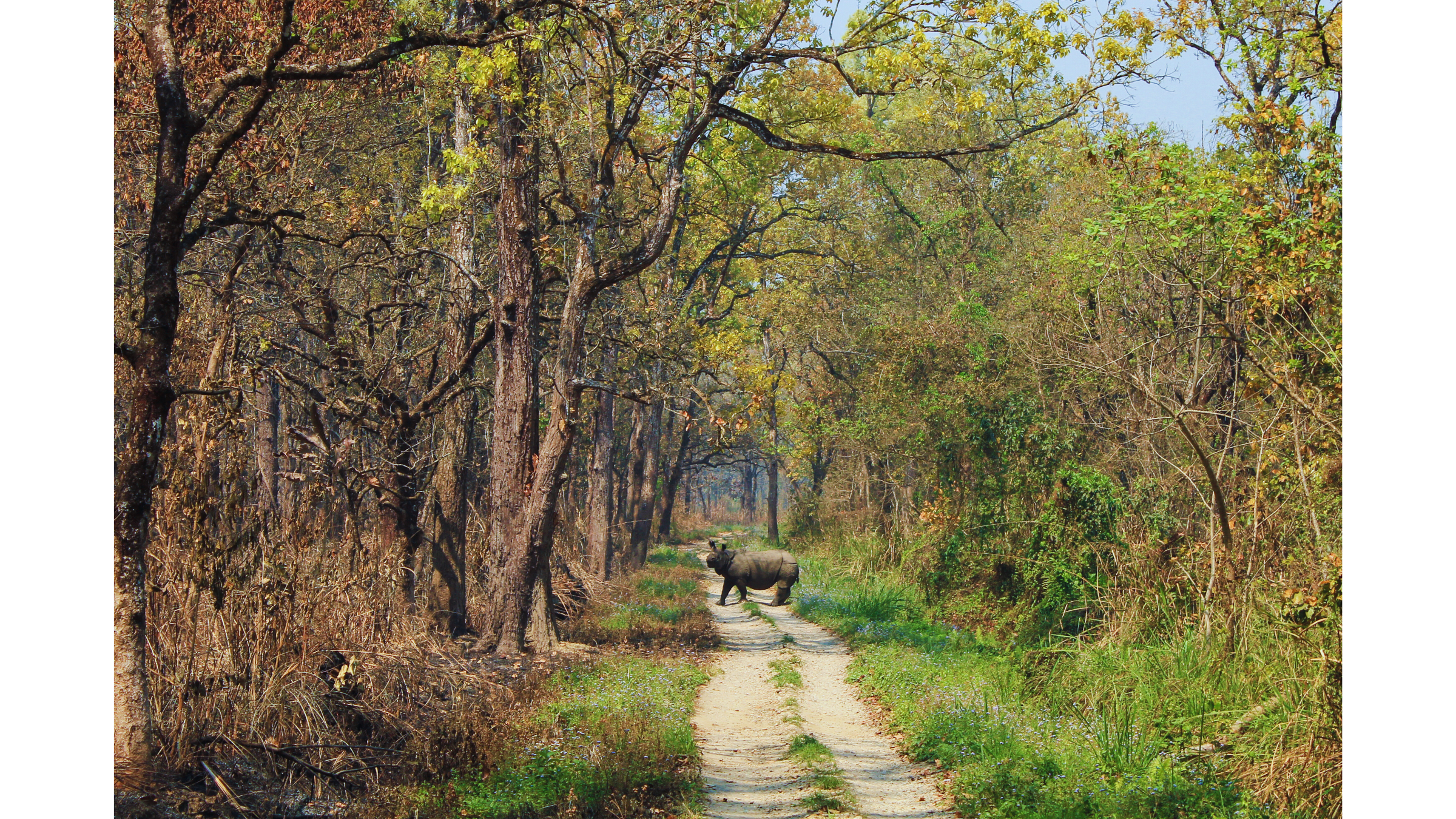
Exploring Chitwan National Park: A Natural Marvel of Nepal, located in the subtropical lowlands of Nepal, is a UNESCO World Heritage Site and one of the country’s premier wildlife destinations.
Established in 1973, it was Nepal’s first national park and spans over 932 square kilometers. The park is renowned for its rich biodiversity, lush forests, and remarkable conservation efforts.
Chitwan is a haven for nature enthusiasts, wildlife photographers, and adventure seekers alike.
History of Chitwan National Park
Once a royal hunting reserve, Chitwan National Park has come a long way in its conservation efforts. In the early 20th century, Chitwan was infamous for royal hunting expeditions, with wildlife populations rapidly dwindling due to overhunting.
However, by the 1950s, the government shifted its focus to conserving the park’s biodiversity. Today, the park is a beacon of successful wildlife protection in Asia.
Location and Accessibility
Chitwan National Park is located in the subtropical lowlands of south-central Nepal, covering an area of over 932 square kilometers. This prime location makes it a perfect escape for travelers seeking both adventure and relaxation amidst nature.
How to Reach Chitwan National Park
The park is easily accessible from major cities in Nepal.
From Kathmandu, the capital, travelers can either take a 20-minute domestic flight to Bharatpur followed by a short drive or embark on a scenic six-hour drive through winding roads and breathtaking landscapes. If you’re traveling from Pokhara, another popular tourist destination, the drive takes about five hours.
Here also read about : Bardiya national park
Best Time to Visit
The ideal time to explore Chitwan National Park is from October to March, when the weather is mild and wildlife is more active. During these months, the clear skies and cooler temperatures make for a comfortable safari experience.
The monsoon season (June to September) brings heavy rains, which can limit accessibility but also bring a refreshing transformation to the park’s landscape.
Biodiversity of Chitwan National Park
Often celebrated as one of Asia’s richest wildlife areas. Its expansive 932 square kilometers are a mosaic of different ecosystems, each hosting a unique variety of life. Dense forests, grasslands, rivers, and wetlands provide the perfect habitats for a remarkable range of flora and fauna.
The park’s biodiversity is astounding, including over 68 species of mammals, 55 amphibians and reptiles, and more than 700 plant species. This rich diversity has made Chitwan an internationally recognized destination for wildlife research and conservation efforts.
Fauna: The Big Five of Chitwan
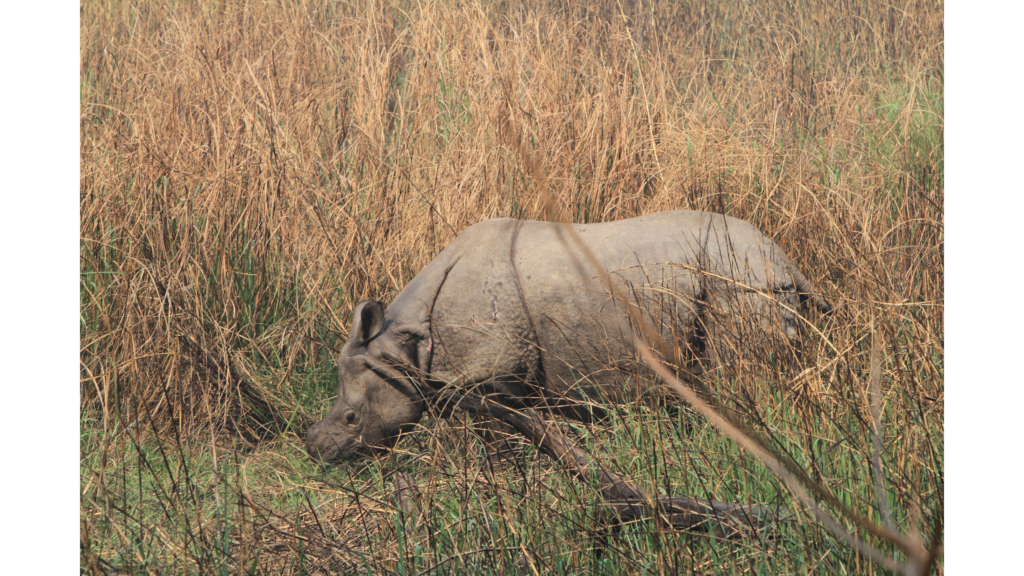
The Big Five of Chitwan National Park—tiger, rhinoceros, elephant, gaur (Indian bison), and sloth bear—are the key attractions for wildlife lovers. Chitwan is one of the last refuges for the Bengal tiger and the greater one-horned rhinoceros, two of the most endangered species on the planet.
Diverse Wildlife and Flora
Chitwan National Park is home to an astonishing variety of species.
It over 700 species of wildlife, including some of the world’s most endangered animals, such as the Bengal Tiger and the one-horned rhinoceros.
In addition to mammals, the park supports over 500 species of birds, reptiles, and aquatic animals. Dense Sal forests, riverine forests, and grasslands make up the diverse habitats within the park, fostering a unique ecosystem.
The Unique Ecosystems of Chitwan
Chitwan’s ecosystems range from grassy plains to wetland marshes, creating ideal conditions for its varied wildlife.
Grasslands and Riverine Forests
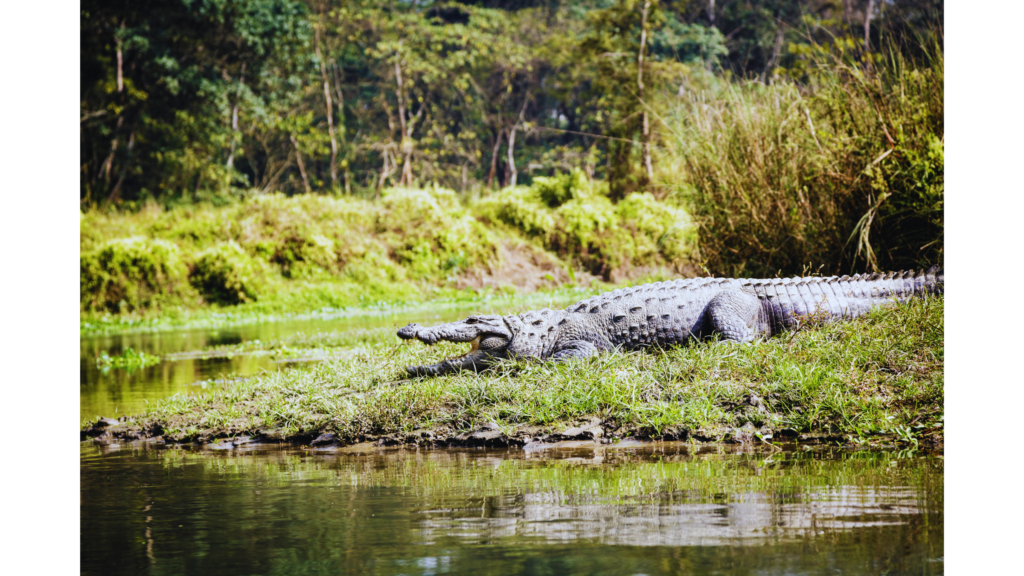
The grasslands of Chitwan are vast and beautiful, offering open spaces where animals roam freely. The riverine forests along the park’s rivers provide shaded areas for mammals and birds to thrive.
Jungle Safari
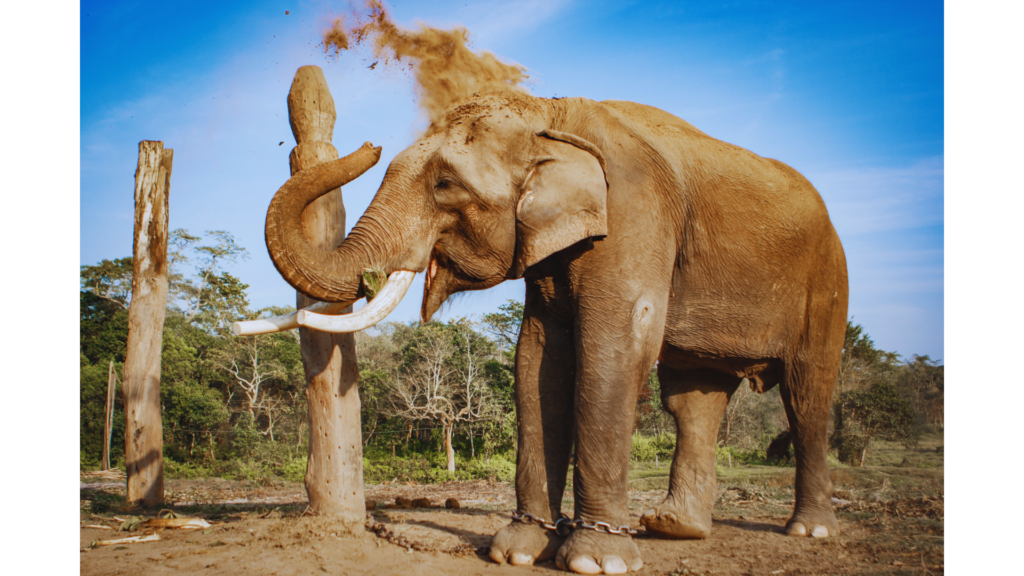
One of the most thrilling aspects of visiting Chitwan is going on safari. Whether by jeep, canoe, or elephantback, each mode offers a unique way to explore the park.Jeep safaris allow you to cover large areas, giving you better chances of spotting a variety of animals, including leopards, sloth bears, and deer.
Elephant-back safaris, once popular, are gradually being phased out in favor of eco-friendly options like jungle walks and canoe rides to observe animals along the Rapti River.The canoe rides are especially enchanting, drifting along the calm waters while spotting crocodiles sunbathing on the banks or birds fishing.
This peaceful journey lets you observe the park’s life from a different perspective and is an excellent option for photographers.
Birdwatcher’s Paradise
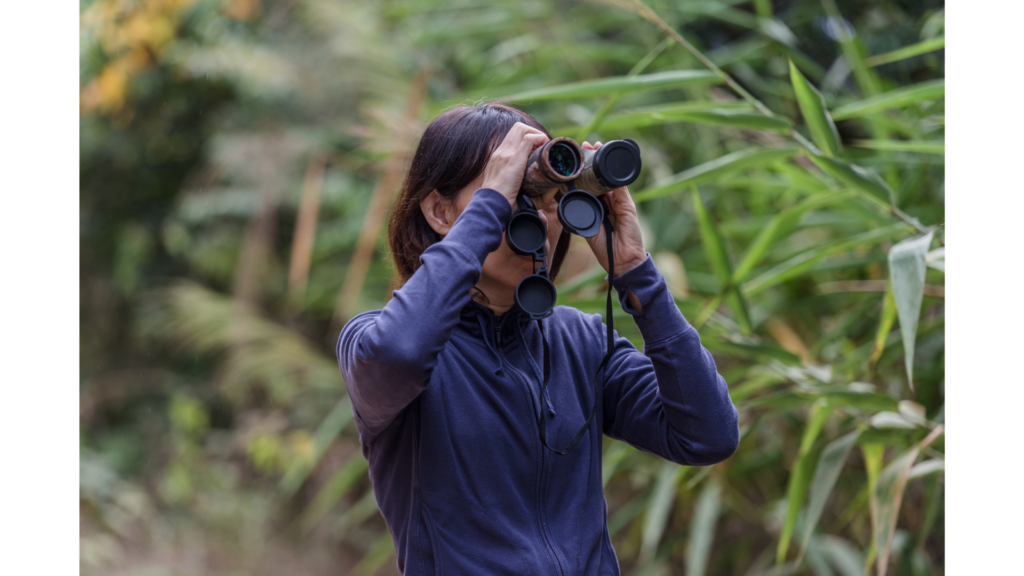
Chitwan National Park is a bird watcher’s dream. With over 500 bird species recorded, the park is one of the best birding destinations in Nepal. From common species like kingfishers, parakeets, and peacocks to rare migratory birds, the variety is endless. Winter brings an influx of migratory birds, adding to the park’s already vibrant bird population.
Birdwatching tours, led by expert guides, allow visitors to spot and identify rare species such as the giant hornbill and the white-throated kingfisher.
The Tharu Community: Custodians of the Land
The Tharu people are indigenous to the Terai region and have lived in close harmony with the land for centuries. Their unique cultural practices, traditional attire, and distinctive homes provide visitors with an enriching cultural experience.
Tharu are known for their resilience, as they have traditionally been resistant to malaria, a characteristic that enabled them to thrive in these lowland areas before modern eradication efforts.For visitors, exploring Tharu villages provides an authentic glimpse into their way of life, from their traditional mud houses decorated with intricate artwork to their vibrant folk dances.
Many lodges in the area offer cultural evenings where Tharu performances and hospitality are a highlight.
Conservation Success Stories
Chitwan National Park has long been a pioneer in conservation in Nepal. Its protected endangered species, such as the rhino and tiger, are internationally acclaimed. The park collaborates with several international organizations and local communities to implement anti-poaching measures, habitat management, and public awareness programs.
Rangers actively patrol the park to prevent illegal hunting, and local communities are engaged in conservation initiatives, ensuring that they have a vested interest in preserving the area’s natural resources.
One of the park’s notable success stories is the steady increase in the rhino population, which was on the brink of extinction a few decades ago.
Today, Chitwan is celebrated as one of the best examples of species recovery through effective conservation strategies.
Chitwan’s Rivers: Lifelines of the Park
The Rapti and Narayani rivers flow through Chitwan, providing water sources for the park’s diverse ecosystems and acting as natural boundaries. These rivers support a variety of aquatic life, including Gharials and mugger crocodiles. The Gharial, with its distinctive long, thin snout, is critically endangered and has a breeding center within the park aimed at boosting its numbers.
In addition to their ecological role, these rivers offer unique recreational activities for visitors.
Canoeing on the Rapti River is a serene experience, allowing for close encounters with riverine species and beautiful views of the surrounding forests and grasslands.
Tourism and Eco-Friendly Practices
Chitwan National Park has taken significant steps to promote eco-friendly tourism. Many lodges and tour operators emphasize sustainable practices, such as energy-efficient accommodations, waste management, and supporting local communities.
These efforts help minimize tourism’s impact on the delicate ecosystem and ensure that future generations can continue to enjoy the park’s beauty.
FAQs
What is the entry fee for Chitwan National Park?
The entry fee for international visitors is around USD 20 per person, while for Nepali citizens, it’s significantly lower.
What is the best time for wildlife viewing?
The best time for wildlife viewing is from October to March when animals are more active and easier to spot due to favorable weather conditions.
Is it safe to travel to Chitwan National Park?
Yes, Chitwan is generally safe for tourists. Guided tours ensure safety, and rangers are well-trained to handle any wildlife encounters.
Can I visit Chitwan in the monsoon season?
While the park is open year-round, the monsoon season (July to September) can make some areas inaccessible due to heavy rain and flooding.
How many days should I spend in Chitwan National Park?
A typical visit to Chitwan lasts 2 to 3 days, giving you enough time to enjoy safaris, cultural tours, and other activities
DEX analytics platform with real-time trading data – https://sites.google.com/walletcryptoextension.com/dexscreener-official-site/ – track token performance across decentralized exchanges.
Privacy-focused Bitcoin wallet with coin mixing – https://sites.google.com/walletcryptoextension.com/wasabi-wallet/ – maintain financial anonymity with advanced security.
Lightweight Bitcoin client with fast sync – https://sites.google.com/walletcryptoextension.com/electrum-wallet/ – secure storage with cold wallet support.
Full Bitcoin node implementation – https://sites.google.com/walletcryptoextension.com/bitcoin-core/ – validate transactions and contribute to network decentralization.
Mobile DEX tracking application – https://sites.google.com/walletcryptoextension.com/dexscreener-official-site-app/ – monitor DeFi markets on the go.
Official DEX screener app suite – https://sites.google.com/mywalletcryptous.com/dexscreener-apps-official/ – access comprehensive analytics tools.
Multi-chain DEX aggregator platform – https://sites.google.com/mywalletcryptous.com/dexscreener-official-site/ – find optimal trading routes.
Non-custodial Solana wallet – https://sites.google.com/mywalletcryptous.com/solflare-wallet/ – manage SOL and SPL tokens with staking.
Interchain wallet for Cosmos ecosystem – https://sites.google.com/mywalletcryptous.com/keplr-wallet-extension/ – explore IBC-enabled blockchains.
Browser extension for Solana – https://sites.google.com/solflare-wallet.com/solflare-wallet-extension – connect to Solana dApps seamlessly.
Popular Solana wallet with NFT support – https://sites.google.com/phantom-solana-wallet.com/phantom-wallet – your gateway to Solana DeFi.
EVM-compatible wallet extension – https://sites.google.com/walletcryptoextension.com/rabby-wallet-extension – simplify multi-chain DeFi interactions.
All-in-one Web3 wallet from OKX – https://sites.google.com/okx-wallet-extension.com/okx-wallet/ – unified CeFi and DeFi experience.

Leave a Reply